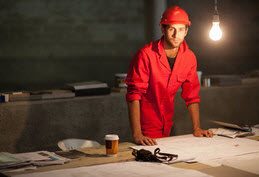The Challenges of Machinery Design

The designers of industrial machinery face numerous conflicting challenges. While they may wish to create something that will make them as celebrated as Philippe Starck, Alec Issigonis or Jonathan Ives, they must firstly produce a design that works.
It must be fit-for-purpose and cost-efficient – and preferably cheap.
The views of customers – both buyers and their operators – must of course be taken into account, but so must the views of the manufacturing department (do we have the tools to make this design?), purchasing (can we afford the components?), shipping (can we get it to the customers?), marketing (does this design fit with our brand strategy?) and sales (can we actually sell it?).
Rules & Regulations
When it comes to construction equipment, fit-for-purpose covers a multitude of constraints.
Firstly, it must meet all the relevant rules and regulations of every country in which it is to be sold. In Europe this means that it has to comply with the Machinery Directive, a 63-page legal document that can be summarized as "your machine must be safe to use". The point of the directive is less about protecting European citizens and more about creating a level playing field in the market place for competing manufacturers.
Not only must manufacturers comply with this, they also have to supply a technical file that demonstrates compliance with the detail of the Machinery Directive.
The other key regulatory issue these days for machinery design is engine emissions. The USA and the European Union have taken a lead on requiring machinery engine emissions to get cleaner and cleaner. There are therefore restrictions on the way in which they power their machines. They can either use an older-generation engine design and after-treatment technology to reduce emissions, or design new engines that have fewer noxious emissions.
Within these constraints, designers are free to create whatever they please. However, if the design is to be economically viable, there must be a market for this machine. Therefore it must be solve a problem or carry out a task at least as well, or more cheaply, than a competing machine.
Designing for Cost and/or Comfort
Different end-user markets have different requirements from their machines. If the purchaser is actually going to be sitting in the cab of the machine all day, every day, he or she might be prepared to pay a premium for home comforts, such as air conditioning and a well-padded seat. They might even wish to have a sense of well-being and self-worth, driving the shiniest and best digger on site. If the machine is joining a hire fleet, the main (or perhaps sole) consideration to the purchaser is the return on investment.
Assuming they have broadly the same functionality, a 10-tonne excavator of Brand A will generate the same rental yield as a 10-tonne excavator of Brand B. If Brand A is 20% more expensive than Brand B, who would want to buy Brand A?
Brand A will be quick to point out that it has a higher residual value than Brand B and achieves a better re-sale price, but this may not be enough inducement for buyers, if they can have more lifetime rental yield for the same initial capital investment (since they can buy more of the cheaper Brand B machines).
Brand A must respond to this competition either by making its machines cheaper or better, or preferably both. It must offer features that are not offered by Brand B that that actually add value. These features may not increase rental rates but they could increase the length of useful operating life and reduce downtime for repairs and maintenance. They could therefore increase yield.

This is where the smart designers are focusing their energies.
Staying Green
Construction machinery designers may say that their most important challenge is saving the planet by reducing the carbon footprint of their machines. Not only must they reduce engine emissions by making engines cleaner and more efficient, they must reduce the embedded carbon in the manufacturing process, not least by looking to use recycled and recyclable components.
They are right to recognize the environment as an important challenge, but it is not their first priority. Their first priority is to stay in business long enough to be able to help save the planet. For this, they must make machines that are commercially successful and stay ahead of the game.
The ultimate goal is a machine that never breaks down and never wears out. But try getting that idea past the marketing department. There is a lot of money made in spare parts and repair and maintenance. Distributors rely on this business. Industry, therefore, requires its machines to be good but not perfect.
It’s a conundrum that may resonate with anyone who has seen that great 1951 British movie The Man in the White Suit.
 Written by
Written by